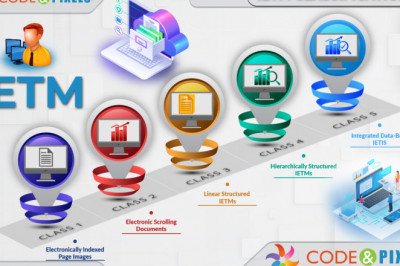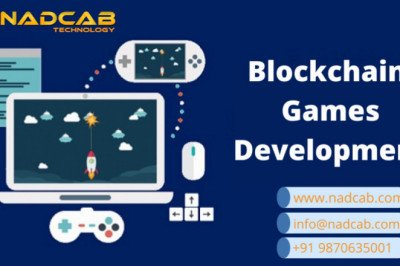views
NFT Marketplace enabler is ready to be your solution. The complete license collectible includes using the Vexanium public blockchain which already has a legal entity in Indonesia.
But apart from that, when a brand decides to create an NFT Marketplace, it is necessary to analyze the challenges that might be found. The following Collective summarizes the 9 challenges of creating an NFT marketplace in general that can hinder brands!
1. Legal Challenges
The challenge of creating the first NFT marketplace development is that there is currently no international legal definition of NFT. Countries like UK, Japan, European Union are moving forward with different approaches to classifying NFTs.
However, you could say that the Law regarding NFTs is still stuck in finding a proper definition as the market and variety of NFTs continue to expand, making it difficult to achieve a solid foundation for compliance within NFTs. In Indonesia, crypto regulations are in the process of being transferred from Bappebti to OJK, in the United States, the CFTC and SEC are debating whether blockchain is a security or a commodity.
To avoid this, Kolektibel recommends that brands engage with the NFT marketplace from the start that complies with existing regulations. Collectibles that use Vexanium (the blockchain used) have a complete KBLI 62014 and PSE (Electronic System Operator) license from the Ministry of Communication and Information.
2. High and Hidden Fees
NFT trading almost always comes with hidden high gas fees. Therefore, as a newcomer or a brand, you should consider this when choosing the NFT Marketplace platform. Collectibel itself also determines the value of the platform fee from the start and conveys it to the brand.
3. New User Education Effort
The NFT industry is still very new, much like social media platforms were 20 years ago. Which is per user education related to how to have an account to operate it properly. Starting from registering, verifying, making transactions and much more.
The difference is that the NFT marketplace itself has additional challenges where users must connect a wallet from metamask to the marketplace platform. Quite difficult for new users who are not yet crypto savvy.
The convenience that Kolektibel offers from this NFT Marketplace platform development challenge is NFT collections and payments using rupiah through the Kolektibel.com platform. Thus, users do not need to feel difficult and confused to start the NFT collection.
4. Smart Contract Risks and Maintenance of NFTs
Continuing the list of challenges in creating an NFT marketplace, there are smart contract and NFT maintenance risks. There are several scenarios where hackers attack DeFi (Decentralized Finance) networks and steal large amounts of crypto.
Recently, the most famous DeFi protocol called Poly Network was attacked by hackers, and resulted in losses of up to $600 million in this NFT theft. The reason behind the theft is the smart contract’s inadequate security.
5. Threats of Cybercrime and Online Fraud
The popularity of NFTs certainly increases the risk of fraud and cybersecurity. Many cases show that persons selling digital assets or NFTs are counterfeit or replicas which can be detrimental to collectors.
This is because unscrupulous persons are able to falsify logos and content from intellectual property owners so that it looks like the original NFT Marketplace. Avoiding this, Kolektibel always carries out a curation process for digital assets sold by brands or artists on the platform.
6. Justification of the Difficult Selling Price of NFT Products
Another challenge for brands when they want to create an NFT marketplace is determining the selling price of the NFT product itself. What is the benchmark for determining the sale price of the NFT on your platform.
In practice, the current NFT price will be determined by the creativity, uniqueness, scarcity of sellers and buyers, as well as other factors, such as commitment to benefits or utilities that brands are willing to do. It is still gray depending on how the brand determines, and it is not certain that potential buyers agree with that price, so that it affects the number of purchase transactions.
7. Uncertain NFT Value Due to Crypto Market Fluctuations
Furthermore, the challenge of the NFT marketplace is inseparable from the fluctuating crypto market. Especially for NFTs that are traded on platforms that use crypto-based blockchain networks (decentralized nft marketplace), such as the well-known OpenSea.
Fortunately, this has no effect on the value of the NFT traded on the Kolektibel.com platform. Here, payments use Rupiah and there is no conversion from rupiah to crypto. So that the NFT value is not influenced by external markets, but rather the roadmap of the NFT project concerned and the benefits/utilities offered to collectors.
8. New Industry with Various Choices
NFT is a trending term. However, this does not mean that everyone understands what it is and how to generate income from NFTs. Also, most of the interesting marketplaces try to lump everything in one location, which makes them less understandable for newcomers and not very well organized.
This is why it can be difficult for people to move from one category to another, choose what they want, create tokens, and manage their payments.
9. Minimal Customer Support
As previously stated, the NFT marketplace development solution is still in its infancy, and people will need time to learn more about the opportunity and its applications.
However, some business owners fail to realize the importance of helping their customers. In reality, you never know what bugs or problems your customers might encounter while using your platform, and you are the only one who understands how it works.












Comments
0 comment